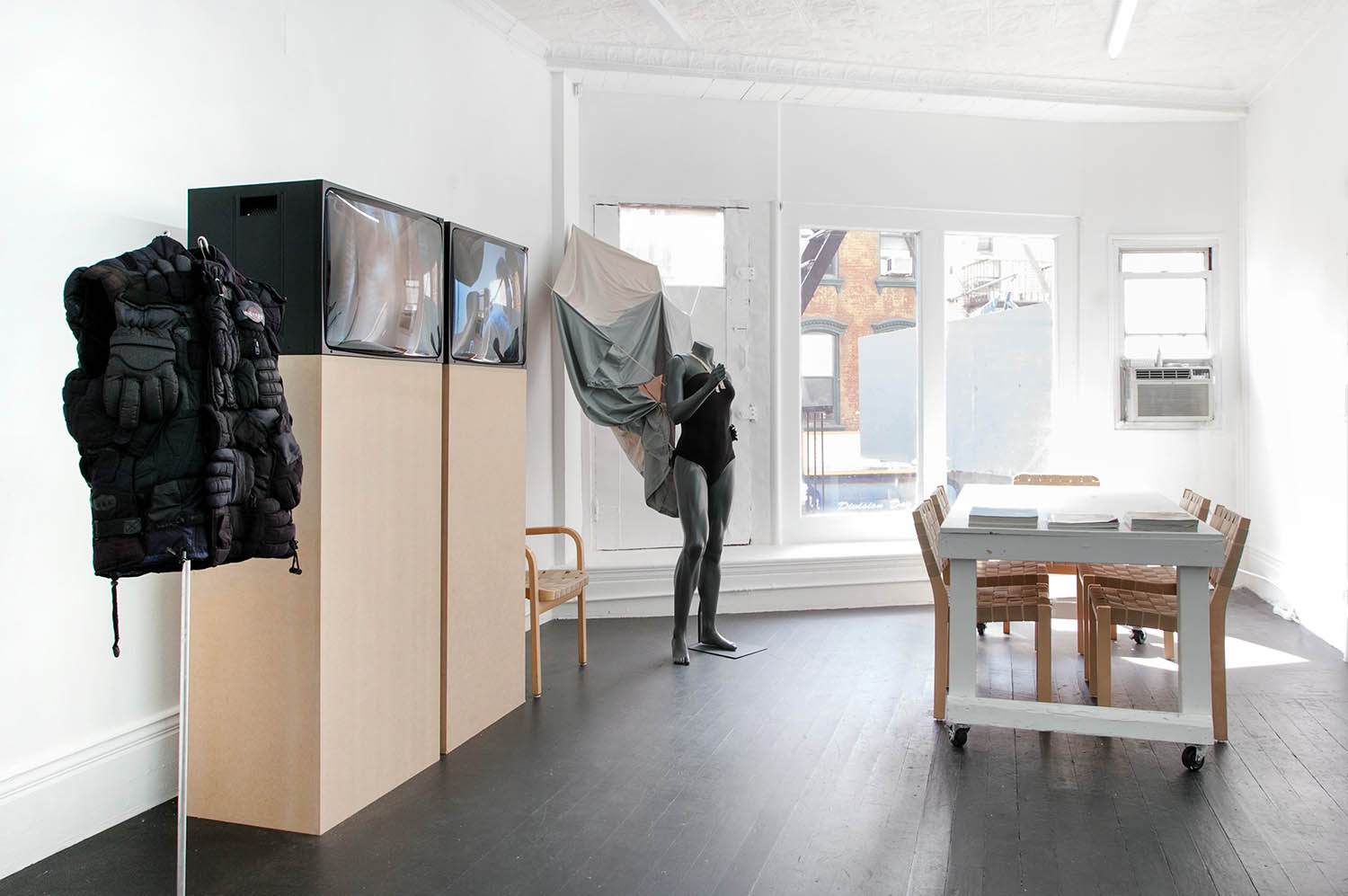An omphalocele, a rare birth defect in which a fetus’s intestines or other organs develop in a transparent membrane sac ballooning outside of the body, is an abnormality upsetting not only for its bodily consequences but in small part for its material reminder of one’s fragile, porous substance, a reality often taken for granted in good health. Walking through Villa Design Group’s installation “One Blow in Anger (Evidence 2011–2014),” their first exhibition in New York, at recent Berlin transplant Mathew, evokes a similar sensation — a sinking admission that, like intestines and nerves, what literally keeps us going is actually quite twisted and grotesque.
In a perimeter of nineteen sketches of nonsensical objects on drafting paper, each frame mounted above a plaque engraved with a corresponding chapter of the group’s nineteen-part text piece Evidence of Childhood I-XIX, the plates narrate a contortion of overlapping, forbidden love affairs. The floor is papered with large acetate sheets printed with pages of Patricia Highsmith’s 1984 Plotting and Writing Suspense Fiction, the artists’ notations in the margins. Meanwhile imitation Barcelona chairs, van der Rohe’s persistent midcentury object of aspirational-lifestyle fetish, sit under plastic sheeting (Suffocation Harp 1–4). Nestled within this cellophane layer are cold, steel forensic tables holding alternately wooden architectural models of impossible structures and brand-new Calvin Klein sweatshirts, stitched with names of his evocative early ’90s fragrances: Escape, Eternity and Obsession.
Softer is the adjoining den, with an imposing, geometric charcoal-colored lamp (Futurized Mussolini Meteorite Lectern); and Carrion Circle, an installation of fluffy floor pillows and another indicator of high taste: a sinister redesign of Eileen Gray’s sleek side table, creating an inviting setting for thumbing through the group’s new publication, REPERTORY 2011–2014 — a hefty report of clinical case studies in “queering the object,” using symbols of refined luxury and design as a means of dismantling relentless consumer desire.


